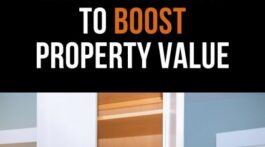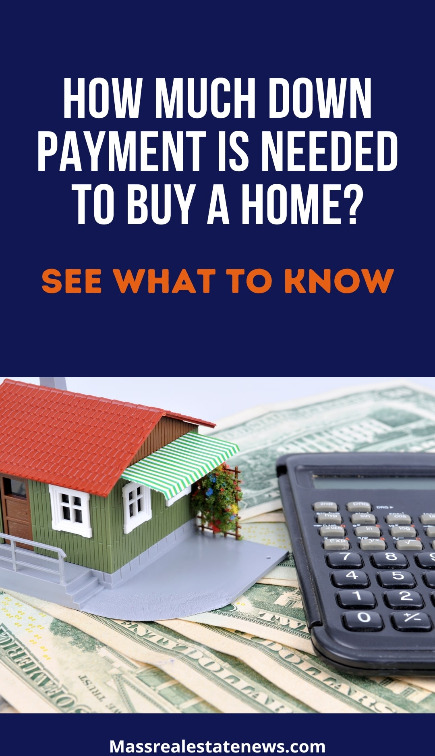Buying a house is a significant life milestone that requires careful planning and thought. One of the most important considerations when purchasing a home is understanding what down payment size is necessary.
For some, saving a large sum of money can be intimidating, but with helpful advice and knowledge, saving for your down payment can be more straightforward.
Being financially prepared is one of the key considerations when purchasing a home.
Minimum Requirements for a Down Payment
When purchasing a home, the size of the down payment you’ll need to provide depends on many factors. Typically, lenders require a minimum down payment of 5% of the purchase price, with higher payments for more expensive properties.
The amount you’ll need to put down will also depend on your credit score; generally speaking, those with higher scores can get away with smaller payments.
The amount required upfront may also vary depending on what type of loan product is being used. Conventional mortgages are as low as 5%, while government-backed loans like FHA or VA loans require much less – as low as 0%.
Not surprisingly, Millennials buying homes often opt for one of these popular programs.
Minimum You Have to Save for a Down Payment
Most borrowers will not qualify for USDA or VA loans, so you’ll be looking at more than 0%. Your credit score and finances will play a part, but the most important is what type of loan you have access to.
Conventional Loan
When it comes to taking out a conventional loan for a home, potential homeowners must consider the minimum down payment requirements.
Conventional loans require borrowers to put a certain amount of money upfront, typically between 5 and 20 percent of the purchase price. This initial investment acts as insurance for the lender in case of default.
The minimum down payment depends on several factors, such as mortgage insurance requirements and current interest rates.
Generally, borrowers must put at least 5 percent down when taking a conventional loan for a single-family primary residence. However, this can increase if you buy an investment property or vacation home.
USDA Loan
USDA loans are an excellent option for purchasing a home with no down payment required. Even though there is no down payment required, borrowers still need to ensure they have sufficient funds to cover closing costs and other associated fees.
The USDA recommends saving at least 2.75% of the home’s purchase price for closing costs and money to cover additional costs like pest control or repairs that may arise after the loan has been approved.
Potential borrowers need to remember that if their credit score is below 640, they will need to come up with an additional 1% of the loan amount due at closing as part of their down payment requirement.
VA Loan
VA loans are offered by the U.S. Department of Veterans Affairs and feature more favorable terms than conventional mortgages. While conventional loans typically require a 5% down payment (or more), VA loans allow you to purchase a home with no money down in some instances.
This means potential homeowners who qualify may not have to worry about saving thousands of dollars just for their down payment.
FHA Loan
An FHA loan is a mortgage insured by the Federal Housing Administration. It requires a minimal down payment of 3.5% of the purchase price of your new home and has more flexible eligibility criteria than traditional mortgages.
What Benefits Does a Larger Down Payment Have?
When purchasing a home, one of the buyers’ most critical decisions is how much money they plan to put down as a down payment.
The down payment size has many advantages buyers should consider before signing on the dotted line.
Avoiding Private Mortgage Insurance (PMI)
Private mortgage insurance (PMI) adds to the cost of a home loan, but it can be avoided. PMI is an insurance policy that protects lenders against borrower default, and it is required when borrowers make a down payment that is less than 20 percent of the purchase price of their home.
PMI premiums are added to monthly mortgage payments, so any steps to avoid this additional expense can help homeowners save money in the long run.
Better Interest Rates
One significant benefit of making a larger down payment is that it will usually result in lower interest rates for the loan. Generally speaking, lenders prefer to see larger initial payments as this indicates a more committed borrower who is likely to repay their loan faster.
This means borrowers who can put down 20% or more may qualify for better interest rates than those with smaller initial payments.
Aside from allowing buyers to secure better interest rates on their mortgage loans, making a larger down payment can also reduce overall costs by eliminating some closing costs and fees associated with certain mortgages.
Faster Underwriting
A larger down payment can lead to several benefits, including faster underwriting. For many borrowers, the ability to close their loan promptly is essential and making a more significant investment upfront can provide an advantage.
Making a larger down payment reduces the risk for lenders since there is more equity in the home from the start.
This means they are often willing to commit resources to review and approve these loans quicker than those with smaller down payments.
With this process expedited, borrowers may be able to close their loans faster than expected and begin taking advantage of lower interest rates sooner rather than later.
In addition to speeding up underwriting, larger down payments offer other advantages, such as reduced mortgage insurance premiums and more accessible qualification standards.
Borrowers should consider all of these potential benefits when deciding how much they wish to put towards their purchase up front.
Can Avoid Jumbo Loans
When looking to buy a home, making a larger down payment can provide many benefits. One of the most notable advantages is avoiding taking out a jumbo loan.
A jumbo loan is needed when the cost of the home exceeds conventional loan limits and requires additional funds from other sources. You can avoid this financing altogether by putting down more money at the outset.
How Much Should You Put Down on a House?
If you can swing it, 20% is usually very advantageous. You can avoid the dreaded PMI, usually have lower fees and interest rates, and underwriting is frequently more straightforward.
If you can’t swing 20%, that doesn’t mean you shouldn’t buy a home now; it just adds more variables to the equation. If you can save money by buying over renting monthly, that is a different story.
 About the author: The above article on what size down payment you need to buy a house was written by Zach Larsen. Zach is a small business owner, finance and investment expert, and co-founder of PineappleMoney.com. He has been featured in publications including MSN, GOBankingRates, Yahoo Finance, and Credit Sesame. He enjoys teaching others about personal finance and spending time with his family.
About the author: The above article on what size down payment you need to buy a house was written by Zach Larsen. Zach is a small business owner, finance and investment expert, and co-founder of PineappleMoney.com. He has been featured in publications including MSN, GOBankingRates, Yahoo Finance, and Credit Sesame. He enjoys teaching others about personal finance and spending time with his family.












No Comment